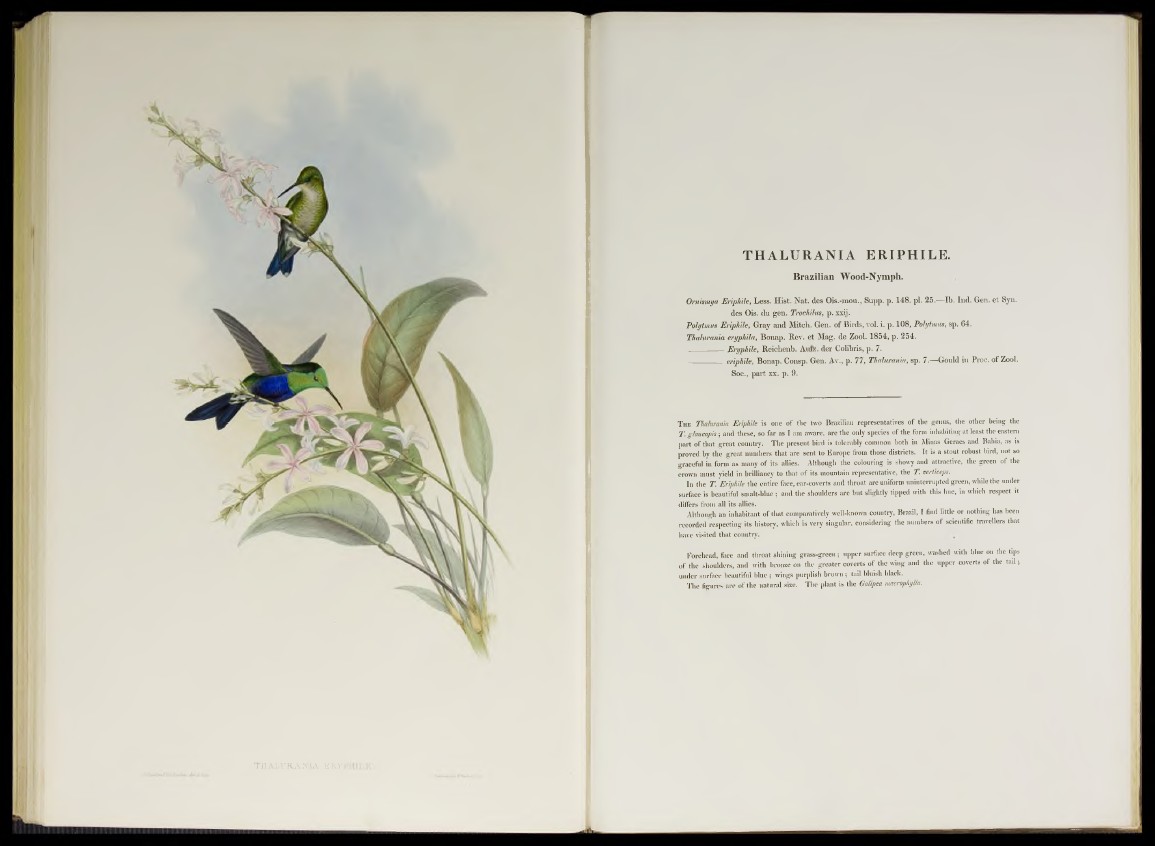
TH A LU R A N IA EKYF1
THALURANIA ERIPHILE.
Brazilian Wood-Nymph.
Omismya Eriphile, Less. Hist. Nat. des Ois.-mou., Supp. p. 148. pl. 25.—Ib. Ind. Gen. et Syn.
des Ois. du gen. Trochilm, p. xxij.
Polytmus Eriphile, Gray and Mitch. Gen. of Birds, vol. i. p. 108, Polytmus, sp. 64.
Thalurania eryphïla, Bonap. Rev. et Mag. de Zool. 1854, p. 254.
_________ Eryphile, Reichenb. Aufz. der Colibris, p. 7.
________ eriphile, Bonap. Consp. Gen. Av., p. 77, Thalurania, sp. 7.—Gould in Proc. of Zool.
Soc., part xx. p. 9.
T he Thalurania Eriphile is one of the two Brazilian representatives of the genus, the other being the
T. glaucopis; and these, so far as I am aware, are the only species of the form inhabiting at least the eastern
part of that great country. The present bird is tolerably comuion both in Minas Geraes and Bahia, as is
proved by the great numbers that are sent to Europe from those districts. It is a stout robust bird, not so
graceful in form as many of its allies. Althougli the colouring is showy and attractive, the green of the
crown must yield in brilliancy to that of its mountain representative, the T. verticeps.
In the T. Eriphile the entire face, ear-coverts and throat are uniform uninterrupted green, whilethe under
surface is beautiful smalt-blue ; and the shoulders are but slightly tipped with this hue, in which respect it
differs from all its allies.
Although an inhabitant of that comparatively well-known country, Brazil, I find little or notliing has been
recorded respecting its history, which is very singular, considering the numbers of scientific travellers that
have visited that country.
Forehead, face and throat shining grass-green; upper surface deep green, washed with blue on the tips
of the shoulders, and with hronze on the greater coverts of the wing and the upper coverts of the tad;
under surface beautiful blue ; wings purplish brown; tail bluish black.
The figures are of the natural size. The plant is the Galipea macrophylla.